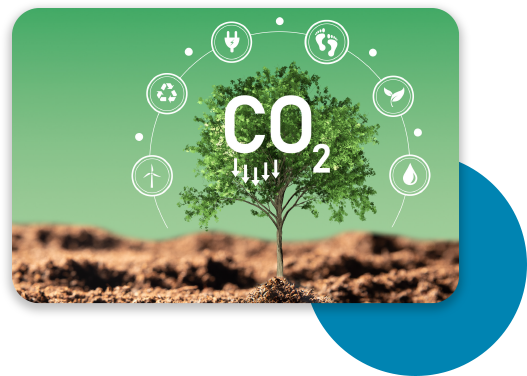By leveraging energy-efficient hardware, reducing paper waste, and optimizing content management, NowSignage helps you achieve your digital communication goals while supporting a greener planet.

Allow users to control and monitor their digital signage networks from a central location. This optimizes performance, reduces unnecessary energy consumption, and extends the lifespan of equipment through scheduled power cycles, ultimately supporting sustainability goals and minimizing environmental impact.


Power-free digital display boards, like the Philips Tableaux, use E-Ink technology to maintain an image without consuming power, only using energy when the content is updated. This makes them highly energy-efficient, environmentally friendly, and ideal for static information displays.

“At NowSignage, we are dedicated to helping our customers achieve their sustainability goals by providing innovative digital signage solutions that minimize environmental impact. From reducing paper waste through digital displays to optimizing energy use with Remote Device Management and power cycling, we ensure our technology not only enhances communication but also supports a greener future.”
Charlie Zammit, Technical Product Manager
In an era where sustainability is more than just a buzzword, businesses are constantly seeking innovative ways to reduce their environmental footprint. NowSignage is at the forefront of this movement, offering sustainable digital signage solutions that not only enhance communication but also contribute to a greener planet.
One of the most significant advantages of digital signage over traditional printed posters is its sustainability. Printed posters require constant reprinting and replacement, leading to substantial paper waste and high ink consumption. In contrast, digital signage offers a reusable, long-term solution. By switching to digital signage, businesses can reduce their reliance on paper, cutting down on deforestation and the energy-intensive processes involved in paper production and printing.
NowSignage’s digital signage solutions provide businesses with the ability to update content instantly and remotely, eliminating the need for physical waste. This not only reduces the environmental impact but also offers cost savings in the long run. With digital signage, updates and changes can be made effortlessly, ensuring that the message is always current without the environmental toll of traditional posters.
Energy efficiency is a crucial aspect of sustainable digital signage, and NowSignage excels in this area with its Remote Device Management (RDM) and power cycling capabilities. RDM allows users to control and monitor their digital signage networks from a central location, optimizing performance and reducing unnecessary energy consumption. By scheduling power cycles, screens can be turned off during non-operational hours, significantly lowering energy use.
This proactive approach to energy management not only supports sustainability goals but also extends the lifespan of the digital signage equipment. By minimizing wear and tear through controlled usage, businesses can reduce electronic waste. NowSignage’s commitment to sustainability through intelligent energy management helps clients achieve a greener footprint while enjoying the benefits of advanced digital signage technology.
E-Ink technology represents the next frontier in sustainable digital signage solutions. Unlike traditional digital displays that consume significant power to maintain an image, E-Ink screens only use power when changing the displayed content. This makes them incredibly energy-efficient and ideal for applications where content doesn’t need to be frequently updated.
NowSignage integrates E-Ink technology into their solutions to provide clients with ultra-low power consumption displays that are perfect for static information, such as directories, schedules, or informational signage. E-Ink displays are also easier on the eyes, providing a paper-like reading experience that is both user-friendly and environmentally responsible. By adopting E-Ink technology, businesses can further reduce their energy consumption, supporting a more sustainable approach to digital signage.
Sustainability is no longer an option but a necessity for businesses aiming to make a positive impact on the environment. NowSignage is leading the charge with innovative sustainable digital signage solutions that outperform traditional printed posters, utilize Remote Device Management and power cycling for energy efficiency, and incorporate cutting-edge E-Ink technology. By embracing these sustainable practices, businesses can reduce their environmental footprint, lower operational costs, and stay ahead in the green revolution. NowSignage’s commitment to sustainability ensures that digital signage is not just a tool for communication, but a step towards a more sustainable future.
Yes, digital signage can be sustainable. Compared to traditional printed signage, digital signage reduces paper waste and the need for physical materials that often end up in landfills. Modern digital displays are becoming more energy-efficient, and many are designed to use LED technology, which consumes less power and has a longer lifespan. Additionally, digital signage can be updated remotely, eliminating the need for frequent replacements and transportation costs associated with physical signs. Implementing scheduling features to turn off displays during non-peak hours further enhances their sustainability. Overall, with thoughtful management and the use of energy-efficient technologies, digital signage can significantly contribute to environmental sustainability.
Creating eco-friendly signs involves several strategies:
Materials: Use sustainable materials such as recycled or biodegradable substrates for physical signs. For digital displays, choose models that are Energy Star certified or have other energy-efficient certifications.
Energy Efficiency: Opt for LED displays, which use less power and have a longer operational life compared to other lighting technologies. Implement power-saving settings such as automatic dimming and scheduled on/off times.
Durability: Design signs to be durable and weather-resistant to reduce the need for frequent replacements, thereby minimizing waste.
Recycling: Ensure that old signage is properly recycled. Many components of digital displays, such as metals and certain plastics, can be recycled.
Printing: For printed signs, use eco-friendly inks and print on demand to avoid excess production.
By focusing on these aspects, businesses can create signs that are not only effective but also environmentally responsible.
NowSignage is a sustainable choice for a digital signage content management system (CMS). NowSignage focuses on sustainability in several ways:
Energy Efficiency: NowSignage integrates with hardware that supports energy-saving features, such as automatic dimming and scheduling, which reduce power consumption.
Cloud-Based Management: The CMS operates in the cloud, which minimizes the need for physical servers and reduces the associated energy consumption and carbon footprint.
Remote Updates: By allowing remote content updates, NowSignage eliminates the need for physical interventions and travel, reducing carbon emissions.
Long Lifespan: NowSignage supports a wide range of durable and long-lasting display hardware, ensuring that devices remain functional for extended periods, which reduces electronic waste.
Paperless Operation: The digital nature of NowSignage eliminates the need for printed materials, significantly reducing paper waste.
By choosing NowSignage, businesses can manage their digital signage networks efficiently while minimizing their environmental impact, contributing to a more sustainable future.
NowSignage Ltd. is a company registered in England and Wales. Registered number: 8424626
VAT registered in the UK: 158122617. Office: Landmark House, Station Road, Cheadle Hulme, Cheshire, SK8 7BS. © All rights reserved